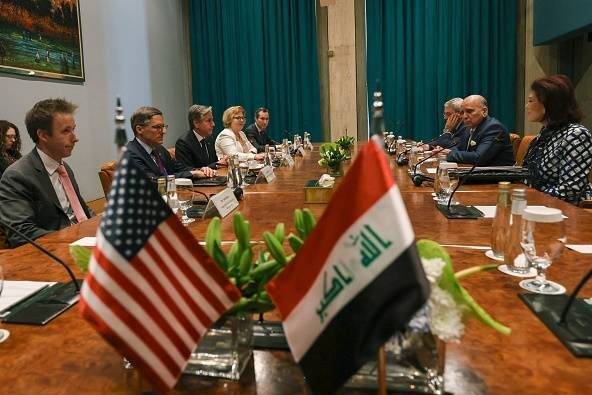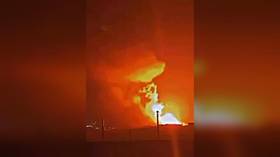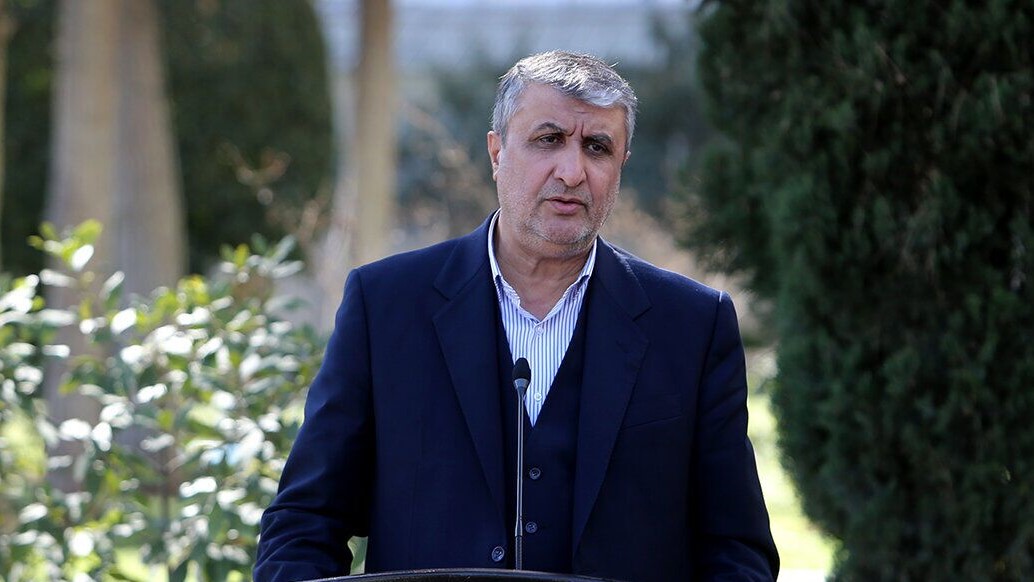NOVANEWS
From the air, the terrain of the Department of Energy’s Nevada National Security Site, with its arid high plains and remote mountain peaks, has the look of northwest Iran. The site, some sixty-five miles northwest of Las Vegas, was once used for nuclear testing, and now includes a counterintelligence training facility and a private airport capable of handling Boeing 737 aircraft.
It’s a restricted area, and inhospitable—in certain sections, the curious are warned that the site’s security personnel are authorized to use deadly force, if necessary, against intruders. It was here that the Joint Special Operations Command (JSOC) conducted training, beginning in 2005, for members of the Mujahideen-e-Khalq, a dissident Iranian opposition group known in the West as the M.E.K.
The M.E.K. had its beginnings as a Marxist-Islamist student-led group and, in the nineteen-seventies, it was linked to the assassination of six American citizens. It was initially part of the broad-based revolution that led to the 1979 overthrow of the Shah of Iran. But, within a few years, the group was waging a bloody internal war with the ruling clerics, and, in 1997, it was listed as a foreign terrorist organization by the State Department. In 2002, the M.E.K. earned some international credibility by publicly revealing—accurately—that Iran had begun enriching uranium at a secret underground location. Mohamed ElBaradei, who at the time was the director general of the International Atomic Energy Agency, the United Nations’ nuclear monitoring agency, told me later that he had been informed that the information was supplied by the Mossad.
The M.E.K.’s ties with Western intelligence deepened after the fall of the Iraqi regime in 2003, and JSOC began operating inside Iran in an effort to substantiate the Bush Administration’s fears that Iran was building the bomb at one or more secret underground locations. Funds were covertly passed to a number of dissident organizations, for intelligence collection and, ultimately, for anti-regime terrorist activities. Directly, or indirectly, the M.E.K. ended up with resources like arms and intelligence. Some American-supported covert operations continue in Iran today, according to past and present intelligence officials and military consultants.
Despite the growing ties, and a much-intensified lobbying effort organized by its advocates, M.E.K. has remained on the State Department’s list of foreign terrorist organizations—which meant that secrecy was essential in the Nevada training. “We did train them here, and washed them through the Energy Department because the D.O.E. owns all this land in southern Nevada,” a former senior American intelligence official told me. “We were deploying them over long distances in the desert and mountains, and building their capacity in communications—coördinating commo is a big deal.” (A spokesman for J.S.O.C. said that “U.S. Special Operations Forces were neither aware of nor involved in the training of M.E.K. members.”)
The training ended sometime before President Obama took office, the former official said. In a separate interview, a retired four-star general, who has advised the Bush and Obama Administrations on national-security issues, said that he had been privately briefed in 2005 about the training of Iranians associated with the M.E.K. in Nevada by an American involved in the program. They got “the standard training,” he said, “in commo, crypto [cryptography], small-unit tactics, and weaponry—that went on for six months,” the retired general said. “They were kept in little pods.” He also was told, he said, that the men doing the training were from JSOC, which, by 2005, had become a major instrument in the Bush Administration’s global war on terror. “The JSOC trainers were not front-line guys who had been in the field, but second- and third-tier guys—trainers and the like—and they started going off the reservation. ‘If we’re going to teach you tactics, let me show you some really sexy stuff…’ ”
It was the ad-hoc training that provoked the worried telephone calls to him, the former general said. “I told one of the guys who called me that they were all in over their heads, and all of them could end up trouble unless they got something in writing. The Iranians are very, very good at counterintelligence, and stuff like this is just too hard to contain.” The site in Nevada was being utilized at the same time, he said, for advanced training of élite Iraqi combat units. (The retired general said he only knew of the one M.E.K.-affiliated group that went though the training course; the former senior intelligence official said that he was aware of training that went on through 2007.)
Allan Gerson, a Washington attorney for the M.E.K., notes that the M.E.K. has publicly and repeatedly renounced terror. Gerson said he would not comment on the alleged training in Nevada. But such training, if true, he said, would be “especially incongruent with the State Department’s decision to continue to maintain the M.E.K. on the terrorist list. How can the U.S. train those on State’s foreign terrorist list, when others face criminal penalties for providing a nickel to the same organization?”
Robert Baer, a retired C.I.A. agent who is fluent in Arabic and had worked under cover in Kurdistan and throughout the Middle East in his career, initially had told me in early 2004 of being recruited by a private American company—working, so he believed, on behalf of the Bush Administration—to return to Iraq. “They wanted me to help the M.E.K. collect intelligence on Iran’s nuclear program,” Baer recalled. “They thought I knew Farsi, which I did not. I said I’d get back to them, but never did.” Baer, now living in California, recalled that it was made clear to him at the time that the operation was “a long-term thing—not just a one-shot deal.”
Massoud Khodabandeh, an I.T. expert now living in England who consults for the Iraqi government, was an official with the M.E.K. before defecting in 1996. In a telephone interview, he acknowledged that he is an avowed enemy of the M.E.K., and has advocated against the group. Khodabandeh said that he had been with the group since before the fall of the Shah and, as a computer expert, was deeply involved in intelligence activities as well as providing security for the M.E.K. leadership. For the past decade, he and his English wife have run a support program for other defectors. Khodabandeh told me that he had heard from more recent defectors about the training in Nevada.
He was told that the communications training in Nevada involved more than teaching how to keep in contact during attacks—it also involved communication intercepts. The United States, he said, at one point found a way to penetrate some major Iranian communications systems. At the time, he said, the U.S. provided M.E.K. operatives with the ability to intercept telephone calls and text messages inside Iran—which M.E.K. operatives translated and shared with American signals intelligence experts. He does not know whether this activity is ongoing.
Five Iranian nuclear scientists have been assassinated since 2007. M.E.K. spokesmen have denied any involvement in the killings, but early last month NBC News quoted two senior Obama Administration officials as confirming that the attacks were carried out by M.E.K. units that were financed and trained by Mossad, the Israeli secret service. NBC further quoted the Administration officials as denying any American involvement in the M.E.K. activities. The former senior intelligence official I spoke with seconded the NBC report that the Israelis were working with the M.E.K., adding that the operations benefitted from American intelligence.
He said that the targets were not “Einsteins”; “The goal is to affect Iranian psychology and morale,” he said, and to “demoralize the whole system—nuclear delivery vehicles, nuclear enrichment facilities, power plants.” Attacks have also been carried out on pipelines. He added that the operations are “primarily being done by M.E.K. through liaison with the Israelis, but the United States is now providing the intelligence.” An adviser to the special-operations community told me that the links between the United States and M.E.K. activities inside Iran had been long-standing. “Everything being done inside Iran now is being done with surrogates,” he said.
The sources I spoke to were unable to say whether the people trained in Nevada were now involved in operations in Iran or elsewhere. But they pointed to the general benefit of American support. “The M.E.K. was a total joke,” the senior Pentagon consultant said, “and now it’s a real network inside Iran. How did the M.E.K. get so much more efficient?” he asked rhetorically. “Part of it is the training in Nevada. Part of it is logistical support in Kurdistan, and part of it is inside Iran. M.E.K. now has a capacity for efficient operations that it never had before.”
In mid-January, a few days after an assassination by car bomb of an Iranian nuclear scientist in Tehran, Secretary of Defense Leon Panetta, at a town-hall meeting of soldiers at Fort Bliss, Texas, acknowledged that the U.S. government has “some ideas as to who might be involved, but we don’t know exactly who was involved.” He added, “But I can tell you one thing: the United States was not involved in that kind of effort. That’s not what the United States does.”




